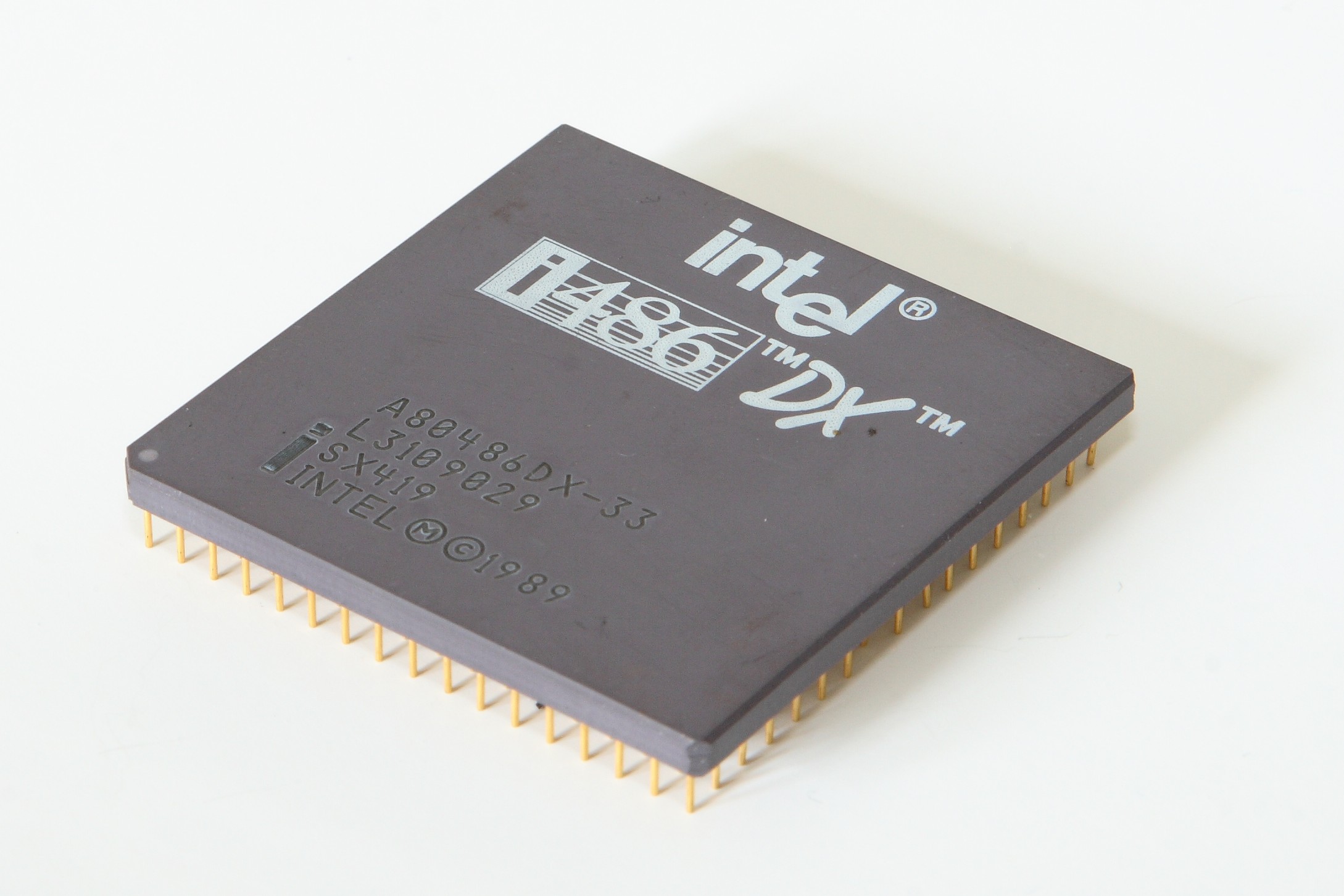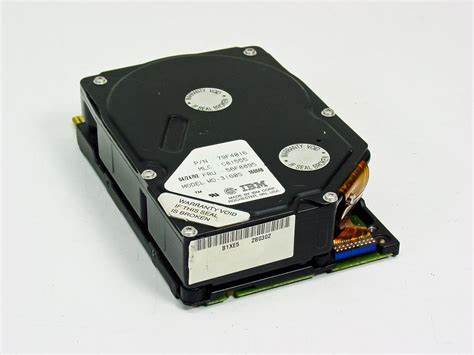 Typical PCs Each Year
Typical PCs Each Year
In 1990, Tim Berners-Lee, working with Robert Cailliau at CERN, proposed a 'hypertext' (HTML) system - the first dawn of the World Wide Web. Magneto-Optical discs were introduced, and Microsoft shipped Windows 3.0 which allowed multiple applications to run simultaneously with much-improved performance than before. IBM also launched their PS/1 range this year.
In World news, Germany was reuinified with the fall of the Berlin wall, Tamagotchi was born, England saw the introduction (and rapid removal) of the Poll Tax, and the Gulf War began when Iraq invaded Kuwait.
In television, Have I Got News For You started along with The Crystal Maze and You've Been Framed. On the music scene, Roxette released It Must Have Been Love, Jon Bon Jovi came out in a Blaze of Glory, as we would Pump Up The Jam from Technotronic.
Motherboards
The EISA bus still dominated the premium market alongside the 486DX-33 with up to 128 KB of level 2 cache, and 2 or 4 MB of memory in 1 MB or 2MB SIMMs. EISA could transfer data at a whopping 33 MB/sec, compared to the ISA bus which had a theoretical throughput of 16 MB/sec (16-bit slot) or 8 MB/sec (8-bit slot) though in practice the ISA bus would be much lower as the CPU needed between 2 and 8 clock cycles to do a transfer depending on CPU and wait state settings.
In 1990, small footprint PC cases were all the rage, especially for the 386SX market for home users with little desk space. Motherboards were being designed with more embedded interfaces on them rather than on expansion cards, so parallel and serial ports, and sometimes graphics too would be directly on the board, meaning less of a need for numerous expansion slots. PCs now came in full desktop, three-quarter desktop, small footprint, tower and mini-tower configurations.
CPUs
 The 486DX-33 and 486DX-25 were the premium choice of microprocessor in 1990, and sat in a range with the 486SX-25, 386DX-33, and 386SX-25 in the mid-range.
The 486DX-33 and 486DX-25 were the premium choice of microprocessor in 1990, and sat in a range with the 486SX-25, 386DX-33, and 386SX-25 in the mid-range.
The 386SX was always envisioned to be the cheap upgrade option for many 286 owners who couldn't stretch into 32-bit 486 or 386DX territory. The 386SX was initially released only in 16 MHz speed, but in early 1990 a 20 MHz version was made available. Both offered users the ability to run 32-bit applications but with a 16-bit data path like the 286. For motherboard designers it was cost-effective, since the 386SX's architecture was almost plug and play for their existing 286 motherboards, as opposed to the 386DX which required a complete redesign to support 32-bit addressing outside the CPU. In mid-1990, the price of the lowest-end 16 MHz 386SX was only about $170 higher than the price of a 12 MHz 286 (about 9% more), and only about $100 higher than the price of a 16 MHz 286 (about 5% more). On the flip side, the cost difference of a 16 MHz 386SX compared to a 20 MHz 386DX was more like $500 (about 20% more).
The cheapest 386SX-16, 2 MB, 40 MBB HDD, colour VGA PC would cost as little at $1,655 in August 1990.
Graphics Cards
386 machines would typically come with a 512 KB 16-bit ISA SVGA card, for example a Trident or Paradise card.
Monitors
Most PCs came with a 14" monitor, capable of displaying 1,024 x 768 in 256 colours.
Hard Disks
 Anywhere from 104 MB up to 200 MB of hard disk space were the norm for a premium build and were typically ESDI. ESDI was developed by Maxtor, and was an interim interface technology that sat between the old and slow ST-506 of MFM/RLL drives and faster but immature SCSI or IDE (parallel ATA) interface. With ESDI part of the controller interface was on the drive itself which improved performance, typically managing a data throughput of between 10 Mbits/sec and 20 Mbits/sec.
Anywhere from 104 MB up to 200 MB of hard disk space were the norm for a premium build and were typically ESDI. ESDI was developed by Maxtor, and was an interim interface technology that sat between the old and slow ST-506 of MFM/RLL drives and faster but immature SCSI or IDE (parallel ATA) interface. With ESDI part of the controller interface was on the drive itself which improved performance, typically managing a data throughput of between 10 Mbits/sec and 20 Mbits/sec.
At the lower end in 386SX territory, a 40 MB IDE drive was more typical, along with a fast 1:1 interleave hard disk controller.
Hard disk technology was at a time where old ST-506 (MFM and RLL*) drives were still prevalent, but IDE prices were similar on the cost-per-MB basis. Access times for IDE were slightly better than MFM/RLL at 25ms compared to 28ms on the older technologies. ESDI and SCSI were the largest, fastest, and most costly with typical access times of 18ms.
*To be accurate here, even IDE drives used the same encoding mechanism as before. I'm just mentioning MFM and RLL as that is how a lot of people remember those old drives with the edge connectors on the back.
Operating Systems
Windows 3.0 and a mouse were bundled with a lot of PCs, along with MS-DOS 4.0. Windows 3.0 was the top-seller for most of 1990.

The Windows 3.0 desktop
Software
Intuit launched Quicken for DOS at a price of $59 this year. Also most popular this year was WordPerfect 5.1, Quarterdeck QEMM386 5.0 and Lotus 1-2-3 Release 2.2 hot on its heels.
Microsoft launched PowerPoint for Windows 3.0, after its early successes on the Macintosh.
UK DESKTOP PC Prices
Cheapest/Clearance PCs
Generic 8088/V20 XT, 640 KB RAM, single 5.25" 360 KB floppy, Hercules Mono Monitor = £299.
Standard/Budget PCs
US DESKTOP PC Prices
Cheapest/Clearance PCs
Swan XT10, 640 KB RAM, 32 MB HDD, Dual floppies, Hercules Mono: $929.
Swan 286-12, 512 KB RAM, 20 MB HDD, floppy drive, Hercules Mono: $1,099.
Standard Computer 286/12, 1 MB RAM, 40 MB HDD, VGA Mono: $1,170. VGA colour: $1,405, SVGA: $1,515.
Dell System 210, 286/12.5, 1 MB RAM, 20 MB HDD, VGA mono: $1,649. VGA colour w/40 MB: $2,149, SVGA: $2,249
Swan 386DX-25, 1 MB RAM, 42 MB HDD, floppy drive, Hercules Mono: $1,795 ($1,995 for VGA Mono, $2,295 SVGA)
Standard Computer 286/20, 1 MB RAM, 66 MB HDD, VGA Mono: $1310. VGA colour: $1,545, SVGA: $1,655.
Dell System 316SX, 1 MB RAM, 20 MB HDD, VGA mono: $1,949. VGA colour w/40 MB: $2,449, SVGA: $2,549
Standard Computer 386SX/16, 1 MB RAM, 100 MB HDD, VGA Mono: $1,695. VGA colour: $1,930, SVGA: $2,040.
AST Bravo/386SX, 2 MB RAM, VGA graphics and monitor, $2,095.
CompuAdd 320s, 1 MB RAM,
40 MB HDD, colour VGA monitor: $2,189.
Standard Budget PCs
Standard Computer 386DX/25, 1 MB RAM, 100 MB HDD, VGA Mono: $2,195. VGA colour: $2,430, SVGA: $2,540.
Dell System 320LX (386SX/20), 1 MB RAM, 40 MB HDD,VGA mono: $2,599. VGA colour: $2,899, SVGA 80MB: $3,199
AST Premium 386SX, 2 MB RAM, VGA graphics and monitor, $2,695.
CompuAdd 325 w/ 32K cache, 1 MB RAM,
40 MB HDD, colour VGA monitor: $2,889.
Dell System 310 (386DX/20), 1 MB RAM, 40 MB HDD,VGA mono: $2,999. VGA colour/80MB: $3,499, SVGA: $3,599
Standard Computer 386DX/33, 1 MB RAM, 100 MB HDD, VGA Mono: $3,095. VGA colour: $3,330, SVGA: $3,440.
Acma Computers 386/33 w/ 64K cache, 4 MB RAM, 150 MB ESDI HDD, 16-bit VGA card, 14" VGA monitor: $3,995.
Dell System 325 25 MHz 386, 1 MB RAM, 40 MB HDD, VGA Mono Monitor = $3,999.
Dell System 325 25 MHz 386, 1 MB RAM, 100 MB HDD, VGA Color Monitor = $4,899.
Dell System 325 25 MHz 386, 1 MB RAM, 150 MB HDD, SVGA Color Monitor = $5,499.
AST 486
Premium PCs
CompuAdd 425, 4 MB RAM, 80 MB HDD, 16-bit VGA card, Colour VGA monitor: $4,995
Acma Computers 486/25 w/ 128K cache, 4 MB RAM, 150 MB ESDI HDD, 16-bit VGA card, 14" VGA monitor: $5,995.
Northgate Elegance 486/25 w/ 64K cache, 4 MB RAM, 200 MB HDD, Hercules mono: $5,895. 486/33 version: $6,395.
Laptops/Notebooks
CompuAdd Companion 80C286-12 CPU, 1 MB RAM, mono VGA display: $2,895
Zeos 386SX-16 Portable, 1 MB RAM, 42 MB IDE HDD, mono VGA (16 greyscales): $2,195
Dell System 316LT, 1 MB RAM, 20 MB HDD, VGA mono: $3,199